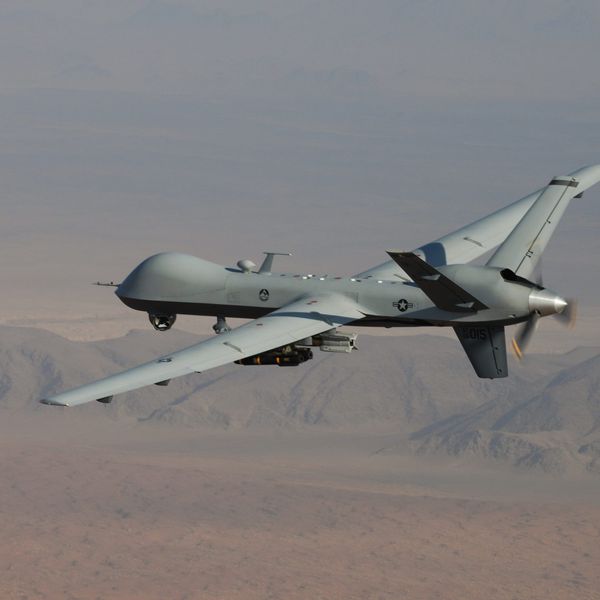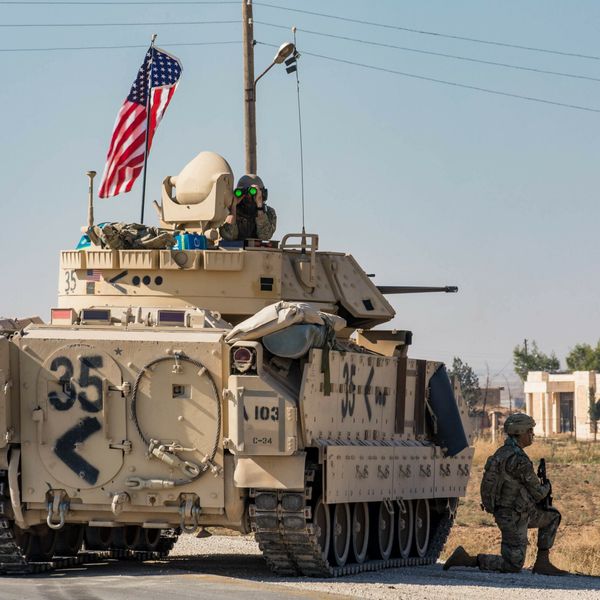“Emergency Funding to Thwart Chinese Communist Party Military Aspirations and Protect the United States Defense Industrial Base.” That is the ungainly title of a measure introduced by Sen. Tom Cotton to boost U.S. military spending by $43 billion, on top of the $741 billion already requested by the Department of Defense for the year ahead.
Cotton’s proposal, stuffed with lucrative giveaways to the defense industry — $1.6 billion for “logistics and security enablers,” $775 million for “building national resilience to space weather,” among others — bears little apparent relevance to the military equation in Asia and is unlikely to be embraced by a majority of Senators. However, many of his proposed budgetary add-ons have been incorporated into other measures aimed at boosting U.S. military might in the Asia-Pacific region.
With President Trump and the Republicans blaming China for everything from the COVID-19 pandemic to declining American competitiveness, and Democrats eager to demonstrate their national security credentials, politicians from both parties are competing with one another to introduce multibillion-dollar initiatives like Cotton’s aimed at bolstering America’s China-oriented forces.
One of these, the proposed Pacific Deterrence Initiative, enjoys widespread bipartisan support. Introduced by Sens. Jim Inhofe and Jack Reed — the chair and ranking member of the Senate Armed Services Committee — would accord the Pentagon additional funds to purchase more of the high-tech weaponry it is already destined to receive under the ballooning budgets of the Trump era.
But even this largess, Inhofe and Reed argue, is not enough: additional appropriations are needed to ensure the effective utilization of all these new weapons and thereby “send a strong signal to the Chinese Communist Party that the American people are committed to defending U.S. interests in the Indo-Pacific.”
SASC in turn voted in June to incorporate the Inhofe-Reed plan in its draft of the FY2021 National Defense Authorization Act (NDAA). Under the committee’s version of the bill, $1.4 billion would be allocated for the Pacific Defense Initiative in FY 2021 and another $5.5 billion in FY 2022.
Not to be outdone, the House Armed Services Committee has come up with its own variant of the Inhofe-Reed plan, tactfully dubbed the Indo-Pacific Reassurance Initiative. As its title suggests, the House version places top priority on bolstering America’s links with close allies in the region; but it, too, emphasizes the enhancement of U.S. war-fighting capabilities there. An initial allocation of $3.6 billion is proposed for these purposes in FY 2021, with additional amounts to be added in coming years based on a future assessment of Pentagon requirements.
Underlying all of these initiatives is an assumption that the military threat posed by China has metastasized in recent years and that the U.S. military is not doing enough to counter the surging peril. But this assumption contradicts available data on U.S. and Chinese military capabilities, which shows the Chinese lagging behind this country in every key indicator of military prowess.
As China’s economy has grown, it has increased its investment in military modernization. According to the Stockholm International Peace Research Institute, Chinese military expenditures rose by 5.1 percent in 2019, climbing from $253 to $261 billion (making it the world’s second-biggest military spender, after the U.S.). But America’s military spending is nearly three times greater that China’s and is rising at a faster rate: in the same year, American military expenditures rose by 5.3 percent, jumping from $695 to $732 billion. [5]
China is also replacing its older, Soviet-era ships and planes with more modern versions in a determined effort to match the more advanced capabilities of comparable American equipment. But the United States is hardly standing still: according to a June 2020 report by the Government Accountability Office, the Pentagon plans to spend $1.8 trillion over the next several years to acquire major new weapons systems, including such massively costly programs as the F-35 Lightning II strike fighter (total estimated program cost: $390 billion); the Columbia Class Ballistic Missile Submarine ($105 billion), and the Gerald R. Ford class nuclear-powered aircraft carrier ($48 billion). Also included in this array of high-powered weaponry are new hypersonic missiles primarily intended for war with China, including the Army’s Precision Strike Missile (PrSM) and the Air Force’s Air-launched Rapid Response Weapon (ARRW).
Look further into the documents the Pentagon submitted in support of its FY 2021 budget request of $741 billion, and it is evident that it is already devoting colossal amounts to the acquisition of weapons and supportive technology aimed at deterring and, if necessary, defeating China (or its great-power cousin, Russia) in all-out combat.
The Defense Department “continues to invest in advanced technologies that will help maintain tactical advantage, such as artificial intelligence, directed energy, and hypersonic weapons,” the Pentagon’s FY 2021 Budget Overview avows. “DoD’s FY 2021 research and development budget is the largest ever requested and is laser focused on the development of these crucial emerging technologies to expand our warfighting advantages over strategic competitors.”
Search item-by-item through the Pentagon’s budget request, and one is overwhelmed by the sheer multitude of programs devoted to new weapons development and the exploitation of advanced technologies. The FY 2021 request for procurement runs to 355 pages and incorporates many thousands of items; the separate research, development, test, and evaluation request is 242 pages long and packed with items like “Advanced Weapons Technology” and “Long Range Precision Fires Technology.” It is virtually impossible to find a proposed weapon or device that is not being allocated millions or billions of dollars.
One wonders, therefore, what additional capabilities Sens. Cotton, Inhofe, Reed, and others deem sufficiently vital to justify supplemental spending on top of the hundreds of billions already being spent on advanced weaponry to intimidate and, if necessary, defeat China. Look through their proposals, and all one finds are minor tweaks to what the Pentagon is already doing.
Both the Pacific Deterrence Initiative and the Indo-Pacific Reassurance Initiative, for example, emphasize measures to ensure the rapid deployment of hypersonic weapons at bases in the western Pacific, where they would be in range of any Chinese warships operating in the area; both also favor an increased tempo of joint military exercises with U.S. allies in the region. But while the Defense Department would never turn down extra dollars for measures like these, it is already rushing the deployment of hypersonic weapons and maintains a busy schedule of joint exercises in the Pacific, like the forthcoming Rim of the Pacific 2020 exercise, scheduled for August 17-31 in waters off Hawaii.
Examined carefully, the various proposals for increased spending on China-oriented military programs will add precious little to the already formidable U.S. combat advantage in the Asia-Pacific region. If anything, they will provide fodder for hawks in Beijing who seek to boost China’s own spending on advanced weaponry — thereby precipitating a costly arms race in such munitions and possibly diluting America’s existing advantage.
If Senators Reed, Inhofe, and their colleagues in the House and Senate are truly concerned about U.S. combat effectiveness in Asia, they should be asking if all those myriad programs in the Pentagon’s FY 2021 budget request are truly necessary and if a leaner, less costly force might not serve U.S. security interests better.
















